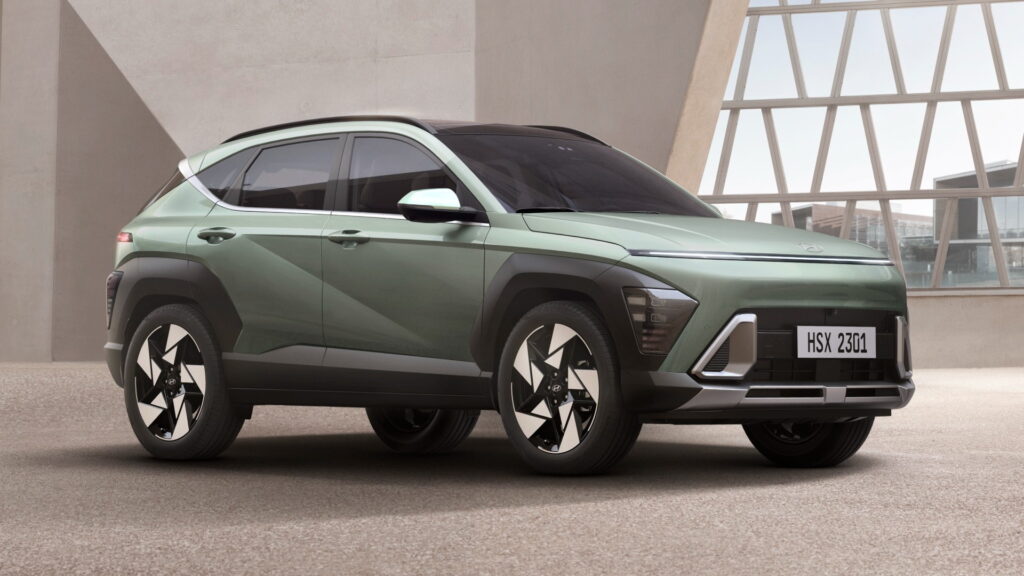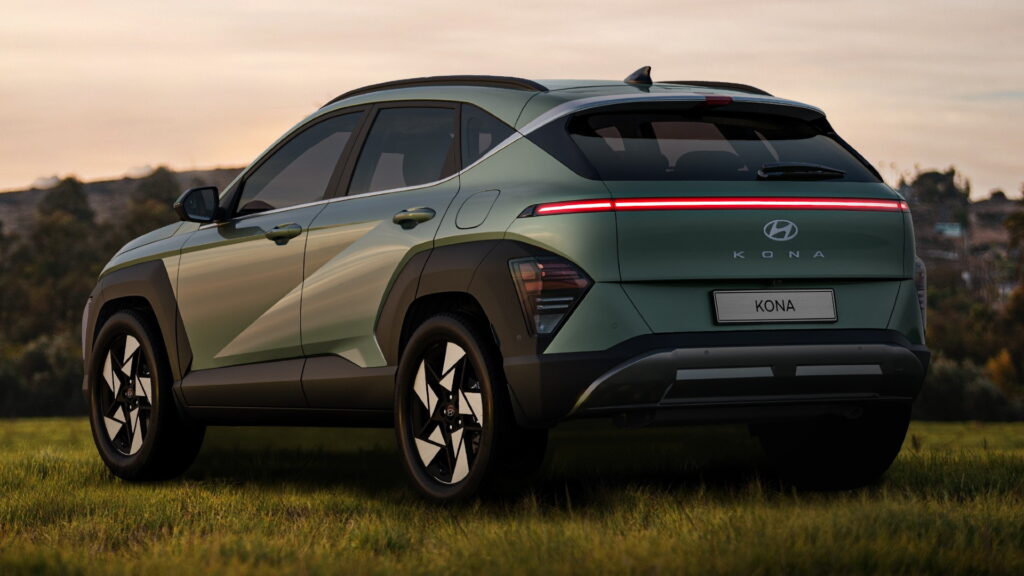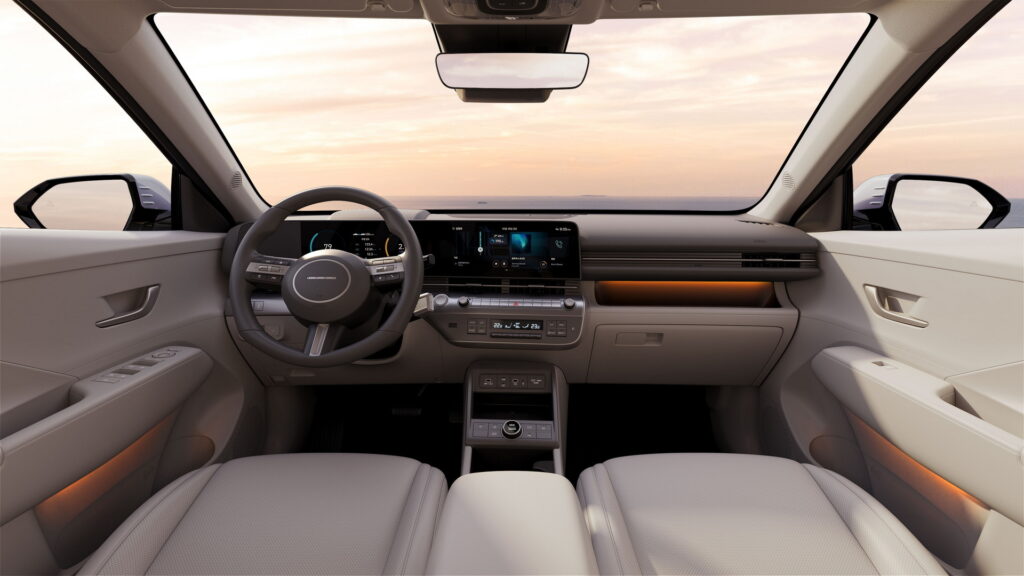<!—->
The Korean-spec Hyundai Kona gets two ICE-only powertrains alongside a hybrid and an EV
5 hours ago
 –>
–> 
by Thanos Pappas
–>
The 2024 Hyundai Kona was unveiled last month, but the automaker has now given us a closer look at its design and specifications, at least concerning the Korean-spec ICE-powered and hybrid variants since the EV and the global-spec models will be detailed in March.
Starting with the powertrains, in the Korean market, the Hyundai Kona lineup includes two ICE options, a hybrid, and an EV. The naturally aspirated 2.0-liter engine produces 147 hp (110 kW / 149 PS) and 179.5 Nm (132.4 lb-ft) of torque and is exclusively mated to Hyundai’s Intelligent Variable Transmission (IVT). Those who want something punchier can opt for the turbocharged 1.6-liter T-GDi engine producing 195 hp (146 kW / 198 PS) and 265 Nm (195 lb-ft) of torque.
The more efficient Kona Hybrid comes fitted with a naturally aspirated 1.6-liter GDi engine and a single electric motor, producing a combined 139 hp (104 kW / 141 PS) and 265 Nm (195 lb-ft) of torque. Hyundai didn’t provide more information but those specs are identical to the mechanically related Kia Niro Hybrid.
Read: Hyundai Ioniq 5 With e-Corner Tech Gets Crab Mode, Can Turn Wheels 90 Degrees

The 2024 Kona is slightly larger than its predecessor, measuring 4,350 mm (171.2 inches) long, 1,825 mm (71.9 inches) wide, and 1,580 mm (62.2 inches) tall, with a wheelbase of 2,660 mm (104.7 inches).
We have pretty much covered the design of the second-gen Kona, with sci-fi features like the full-width LEDs on both ends. Hyundai calls them “Seamless Horizon Lamps”, while in the Kona EV they are pixelated. The EV also comes with a different bumper design and body-colored plastic cladding compared to the ICE-powered and hybrid trims which feature active air flaps on the bumper intakes. Finally, the N Line trim gets a sportier bodykit and the option of a black roof and unique 19-inch alloy wheels.
advertisement scroll to continue

Inside, Hyundai claims that the new generation is roomier and more versatile than the model it replaces, offering 77 mm (3 inches) more legroom, 11 mm (0.4 inches) more headroom, and best-in-class shoulder room for the rear passengers. This was made possible thanks to the 60 mm (2.4 inches) longer wheelbase and the slimmer front seats. Furthermore, the new shift-by-wire gear selector has been moved behind the steering wheel freeing up space for extra storage compartments on the center console. With the rear seats folded, there is up to 723 lt (25.5 cubic feet) of cargo space although Hyundai didn’t give us the number in the standard five-seater configuration.
In terms of technology, the digital cockpit comprises dual 12.3-inch screens, with the new infotainment being compatible with over-the-air updates. There is also ambient lighting, a smart power tailgate, wireless charging, remote control features, and plenty of ADAS including navigation-based Smart Cruise Control (NSCC) and Highway Driving Assist (HDA).
It remains to be seen if the global-spec Hyundai Kona will be any different from the Korean-spec model. We will learn more about it this March, alongside the range and power figures for the Kona EV – which will likely be very similar to the Kia Niro EV. Until then, check out the new videos from Korea and the new photos of the SUV in the gallery below.
[embedded content]
[embedded content]
 –>
–> 